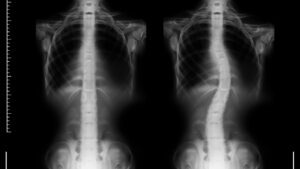
As a gym enthusiast, pushing your limits and getting the most out of your workouts is likely a priority. But while you may be focused on strength and performance, one aspect that often gets overlooked is posture. Poor posture during exercise can lead to a variety of injuries, both in the short and long term. Whether you are lifting weights, performing cardio, or stretching, maintaining proper posture is crucial to preventing injury and improving overall performance.
This article explores how proper posture can prevent injuries, tips to improve your posture, and how it can benefit your workout routine in the long run.
Why posture matters for gym enthusiasts
When you exercise, your body is subjected to various forces, such as gravity, resistance, and movement. If your posture is not aligned properly, these forces can put strain on your muscles, joints, and ligaments, increasing the risk of injury. Proper posture helps distribute these forces evenly across your body, allowing you to move efficiently and reduce unnecessary strain.
For example, if you are performing a squat but your back is hunched forward, the pressure placed on your lower back and knees increases. Over time, this can result in chronic pain and potential injury. Conversely, maintaining a neutral spine and engaging the correct muscles during the exercise can reduce these risks and improve the effectiveness of the movement.
Common posture mistakes in the gym
There are several common posture mistakes that gym enthusiasts often make, and these can lead to injuries if not corrected. Here are some of the most common errors:
1. Rounded shoulders: This is common during exercises like bench presses or push-ups. When you round your shoulders, you place excessive strain on your upper back and neck. This can lead to discomfort or even neck pain if not addressed.
2. Slouching while seated: Whether you’re doing chest presses or seated rows, slouching can throw off your alignment. This increases the likelihood of back pain and can also limit your range of motion during exercises.
3. Leaning forward during deadlifts: Deadlifts are a great exercise for strengthening the back, glutes, and hamstrings, but leaning forward can put significant pressure on your lower back. This can increase the risk of causing back injuries that may require back pain treatment in Singapore.
4. Incorrect head position: Keeping your head tilted in the wrong direction while performing exercises like squats or deadlifts can affect your neck and spine alignment, resulting in neck and shoulder pain.
How to maintain proper posture during workouts
Maintaining good posture is not only about standing tall but also about how your body moves and maintains alignment during physical activity. Here are a few simple ways to improve your posture and prevent injury:
1. Focus on core engagement: The core muscles are the foundation of your posture. Strengthening your core helps stabilise your spine and pelvis, which supports the rest of your body during exercise. Engage your core during all exercises, even when you’re performing upper body exercises like bicep curls or chest presses.
2. Use a neutral spine: Whether you are lifting, squatting, or performing cardio, maintaining a neutral spine is essential. This means avoiding rounding or arching your back. Focus on keeping your shoulders, hips, and knees in alignment while maintaining a straight back.
3. Keep your knees aligned: When performing exercises like squats or lunges, ensure that your knees are not caving inwards or jutting out too far. This helps reduce strain on your knees and reduces the risk of injury.
4. Practice proper breathing: Breathing properly during exercise is vital for maintaining posture. Inhale to prepare, and exhale while performing the exertion phase of an exercise. This helps you engage your core muscles and maintain stability throughout your movements.
5. Warm up and stretch properly: A proper warm-up can prepare your muscles and joints for exercise. Stretching helps improve flexibility and range of motion, making it easier to maintain good posture during your workouts.
How to spot early signs of poor posture
Sometimes, poor posture is difficult to recognise until it results in pain or discomfort. However, there are several signs that can indicate you may be compromising your posture during exercise:
- Pain or discomfort in your neck, back, or joints: If you experience soreness that lingers after a workout, it could be a sign that you are not maintaining proper posture.
- Difficulty performing exercises: If you feel like you can’t perform certain exercises correctly or are struggling to complete a movement, it could be due to poor alignment and posture.
- Fatigue during or after a workout: When your body isn’t in proper alignment, it requires more energy to perform exercises. This can lead to early fatigue, as your muscles have to work harder than necessary.
If you notice these signs, it’s time to assess your posture and make adjustments to prevent future injury.
The role of chiropractic care in posture improvement
Chiropractic care plays an essential role in ensuring that your spine and joints are properly aligned. A neck pain specialist can help you assess your posture and provide targeted treatments to alleviate discomfort and improve your alignment.
By regularly visiting a chiropractor, you can receive personalised advice on posture improvement, along with chiropractic treatments to address any muscle imbalances or joint misalignments. Many athletes have enjoyed the benefits of chiropractic care, and chiropractic adjustments can help improve spinal mobility, relieve muscle tension, and correct alignment issues that may be affecting your posture.
Stretch therapy can further support these benefits by targeting tight muscle groups and improving overall flexibility. When combined with chiropractic care, it can help enhance mobility, reduce strain on joints, and promote better postural balance.
Conclusion
Proper posture is crucial for gym enthusiasts who want to avoid injury and maximise the benefits of their workouts. By focusing on core engagement, maintaining a neutral spine, and avoiding common posture mistakes, you can reduce the risk of injury and improve your performance in the gym. Regular visits to a chiropractor can also be beneficial in ensuring that your posture is on track and addressing any underlying issues.
If you are dealing with neck or back pain, seeking back pain treatment in Singapore from a qualified professional can help you recover and prevent future injuries. With the right approach, you can enhance your fitness routine while maintaining good posture and overall well-being.


